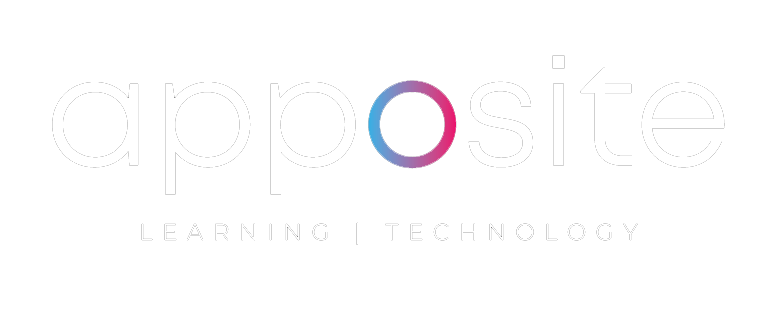Your middle managers are key to successful AI adoption. Here’s How to Equip Them, Not Just Excite Them.
A silent crisis is brewing in the heart of our organizations. While the media hails AI as the driver of productivity and innovation, a stark reality is unfolding one level down: our managers are drowning.
According to a recent Gallup survey, 68% of managers feel unprepared to lead their teams in the age of AI. These are the people responsible for translating high-level strategy into daily action, coaching teams, and driving performance – yet they’re operating from a place of fear and uncertainty, not confidence and vision.
This isn’t just a skills gap; it’s a credibility gap. And if left unaddressed, it may become the single biggest reason your AI transformation fails.
Here’s Why This Should Terrify You
The C-suite signs the checks. The data scientists build the models. But it’s the middle managers who are the true make-or-break layer for AI adoption. They must:
- Explain why an AI tool is replacing a manual process.
- Reskill a top performer whose role is being augmented.
- Champion new platforms while giving feedback to improve them.
- Maintain team morale amidst uncertainty.
When managers lack competence, they become blockers, not enablers -managing the old way and creating friction between AI ambitions and team realities. The problem isn’t technology; it’s leadership.
The Real Hurdles: Fear, Uncertainty, and Credibility
This unpreparedness shows up in three ways:
- The Fear of Irrelevance
Managers quietly ask, “If AI can automate reporting and analysis, what’s left for me?” This fear stops them from championing tools that could elevate their roles to more strategic work. - The Uncertainty of “How”
They’ve been told what AI can do but not how to manage it. How do they measure hybrid human-AI performance or ethically use AI insights in decisions? The playbook doesn’t exist. - The Credibility Gap
You can’t lead through a transformation you don’t understand. A manager who can’t articulate an AI tool’s purpose loses credibility with their more technically aware teams.
Generic “AI for Leaders” webinars aren’t enough. They’re like handing a compass to someone lost in a hurricane. Managers need a detailed map and a new set of navigation skills.
The Solution: The AI Leadership Competency Matrix
The answer isn’t more technical training – it’s leadership transformation.
We need a clear, actionable development path: the AI Leadership Competency Matrix, which moves managers from AI-Aware to AI-Literate to AI-Driven Leaders.
It’s built on two axes: Competency Area (the what) and Proficiency Level (the how well).
| Competency Area | Level 1: AI-Aware (Understands) | Level 2: AI-Literate (Applies) | Level 3: AI-Driven (Leads & Innovates) |
| Strategic Acumen | Explains the “why” behind AI initiatives. | Identifies processes ripe for AI. | Co-creates AI strategy; redesigns workflows. |
| Ethical & Human-Centric Leadership | Aware of AI bias and privacy basics. | Audits AI use for fairness. | Builds a culture of ethical, human-centered AI. |
| Operational Execution | Knows what tools the team uses. | Manages adoption and measures ROI. | Integrates AI data into planning and performance. |
| People & Change Catalysis | Communicates change with empathy. | Co-creates reskilling plans. | Fosters continuous learning and AI experimentation. |
The 4-Step Implementation Plan
Here’s how to operationalize the matrix and transform your managerial layer.
Step 1: Diagnose & Benchmark
Don’t guess—assess. Use the matrix to survey your managers. Identify where they stand (e.g., “Strong operationally, weak on ethics”) and prioritize development accordingly.
Step 2: Curate, Don’t Just Create
You don’t need to build everything from scratch. Curate resources for each level:
- AI-Aware: Short videos, articles, and internal “lunch & learns.”
- AI-Literate: Hands-on workshops, tool training, and ethical case studies.
- AI-Driven: Mentorship, innovation projects, and strategy simulations.
Step 3: Embed in the Flow of Work
Learning must happen on the job.
- Tool Integration: When new AI tools are launched, train managers on managing with them and not just using them.
- Coach for Competency: Enable senior leaders to coach using matrix language (e.g., “How can your strategic acumen improve this process?”).
Step 4: Measure Leadership Impact
Shift success metrics from tool adoption to leadership outcomes. Track:
- Leading Indicators: Manager confidence, employee sentiment, reskilling participation.
- Lagging Indicators: Team productivity, innovation metrics, and retention rates of AI-driven teams.
Conclusion
The age of AI will be won or lost not in the server room, but in the one-on-ones led by your middle managers. By moving beyond technical fear and giving them a clear leadership framework, you turn your greatest risk into your greatest advantage.
At Apposite Learning Solutions, we help organizations turn AI uncertainty into leadership confidence.
Ready to equip your managers to lead with AI clarity?
Let’s design your AI Leadership Enablement strategy together.
The 68% aren’t the problem. They’re the solution we’re ignoring.
What are you seeing in your organization? Are your managers equipped, or are they drowning?
P.S. – If this resonated, three things you can do:
- Share this with one manager who needs to see it
- Comment with your biggest AI leadership challenge
- Tag someone in your org who needs to read this
The conversation needs to start somewhere. Might as well be here.

